Prepare for Picard Season 2 with every Q episode, ranked
Here's every Q episode of Star Trek, ranked worst to best
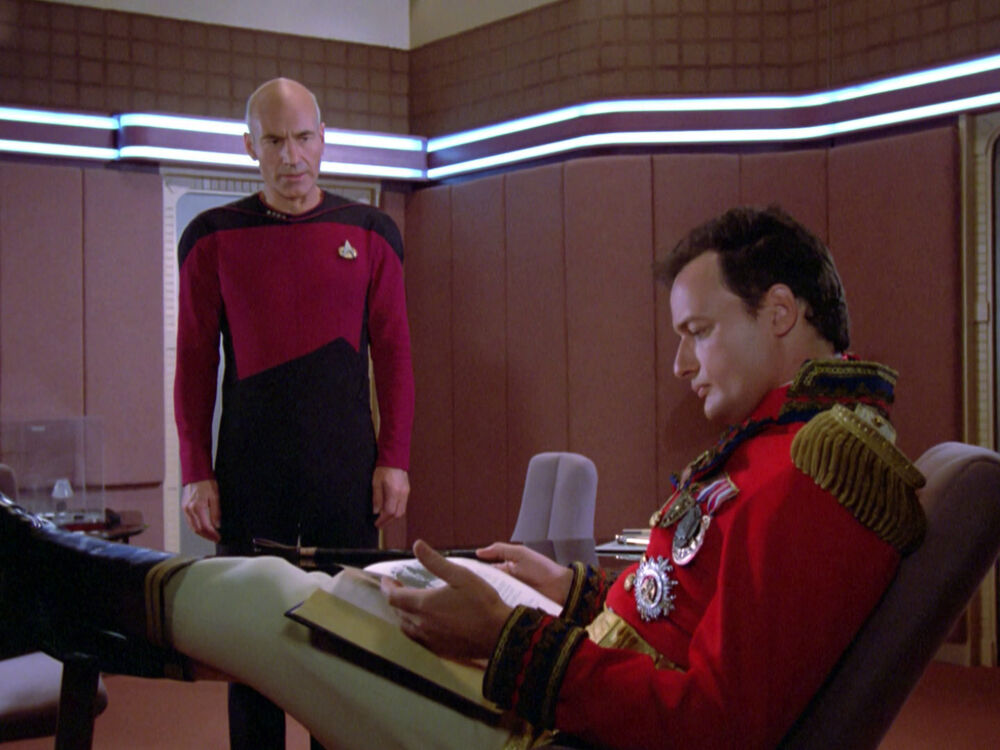
Star Trek fans got an unexpected treat on First Contact Day (April 5), when a teaser trailer for Star Trek: Picard Season 2 debuted. There’s some narration from Jean-Luc Picard (Patrick Stewart) about the nature of time, and our choices, and all the other human-condition philosophizing you’d expect from a Star Trek series. But the real surprise came at the end of the trailer, with a brief voice-over from everyone’s favorite omnipotent trickster: John de Lancie as Q.
For Star Trek neophytes (why they’re watching Picard rather than starting with The Next Generation, one can only guess), Q was a recurring antagonist on Star Trek: The Next Generation, which ran between 1987 and 1994. Bear in mind, we call him an “antagonist,” not a “villain.” That’s because Q isn’t evil in any meaningful sense of the word. He simply wants to challenge Picard, and humanity in general, to better themselves by developing a deeper understanding of the universe. Granted, if members of the Enterprise crew get hurt — or killed — along the way, so be it.
- What to know about Paramount Plus
- The best streaming devices, ranked
- Plus: You may not want Paramount Plus now — but you'll need it soon
Since we know we’ll be getting a long overdue visit from Q when Picard Season 2 debuts in 2022, we figured now would be an ideal time to gather up our favorite Q episodes and rank them from worst to best. To determine the order of this list, I’ve employed the highly scientific method of “asking my coworkers what they think.”
For such a significant figure in the Trek canon, he doesn’t actually show up that often — but that just makes his rare appearances all the more memorable. Here’s every Q episode of Star Trek, ranked from worst to best.
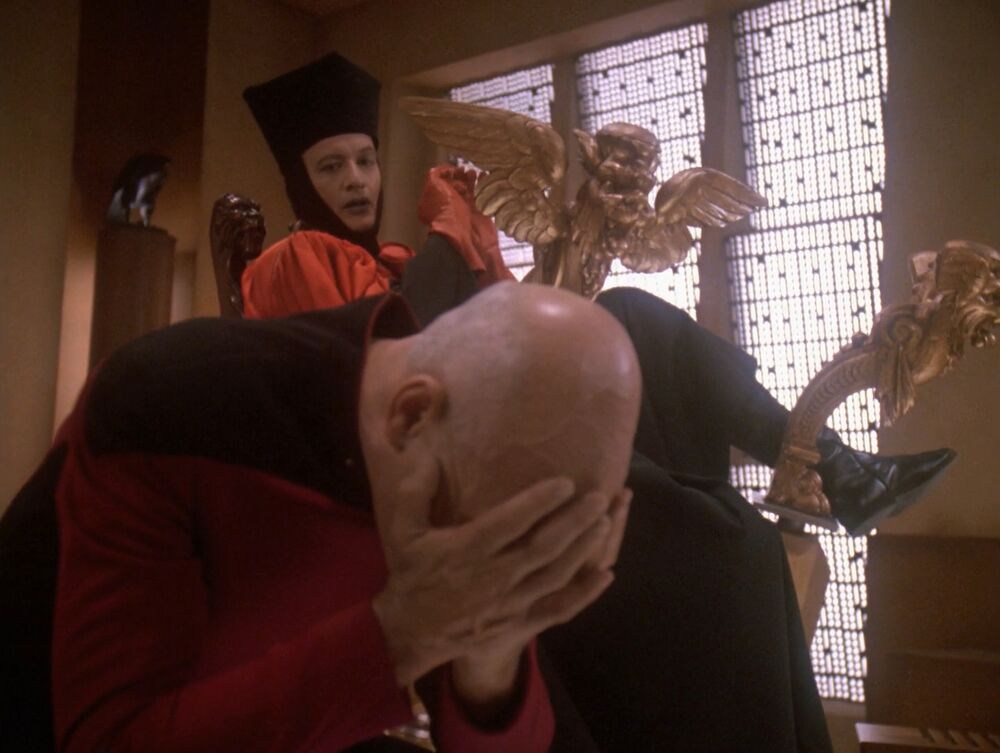
Encounter at Farpoint (TNG: S1, E1 & E2)
Believe it or not, Q’s first appearance is one of his weakest — or, at least, the overall episode is pretty weak. Encounter at Farpoint was the series debut for Star Trek: The Next Generation, and the show didn’t start off on the right foot. With dreary pacing, a predictable story and thin characterizations, Encounter at Farpoint doesn’t have much going for it. However, this two-parter positively perks up when the enigmatic Q appears onscreen, with his rapier wit, gaudy costumes and playfully threatening attitude. It’s fair to say that without the energy Q brought to the TNG premiere, the show might not have worked at all.
Q-Less (DS9: S1, E6)
Q is a great character; Star Trek: Deep Space Nine was a great show. But if we’re being brutally honest, they were probably never meant to go together. Something about Q’s teasing nature and Cmdr. Benjamin Sisko’s forthright attitude just don’t gel together. When Q irritates Picard, it’s funny; when Q irritates Sisko, it’s a little exasperating. In any case, the episode might also have been better if the core plot — something about a magic crystal draining DS9’s energy — had been a little more exciting. Props for Q and Sisko in an old-timey boxing match, though. That was fun.
The Q and the Grey (VOY: S3, E11)
Generally speaking, Q’s presence — similar to guest appearances by Geordi LaForge and Reginald Barclay —helped to liven up the middle seasons of Star Trek: Voyager. Something about The Q and the Grey didn’t really work, though. In this episode, the Q Continuum is in a state of civil war, and Q hopes that creating a new member of the species might help settle the hostilities. Q’s attempts to flirt with Capt. Kathryn Janeway are admittedly entertaining, but the American Civil War metaphor feels a little confused, and never sits quite right with the rest of the episode’s sci-fi trappings.
Sign up to get the BEST of Tom's Guide direct to your inbox.
Get instant access to breaking news, the hottest reviews, great deals and helpful tips.
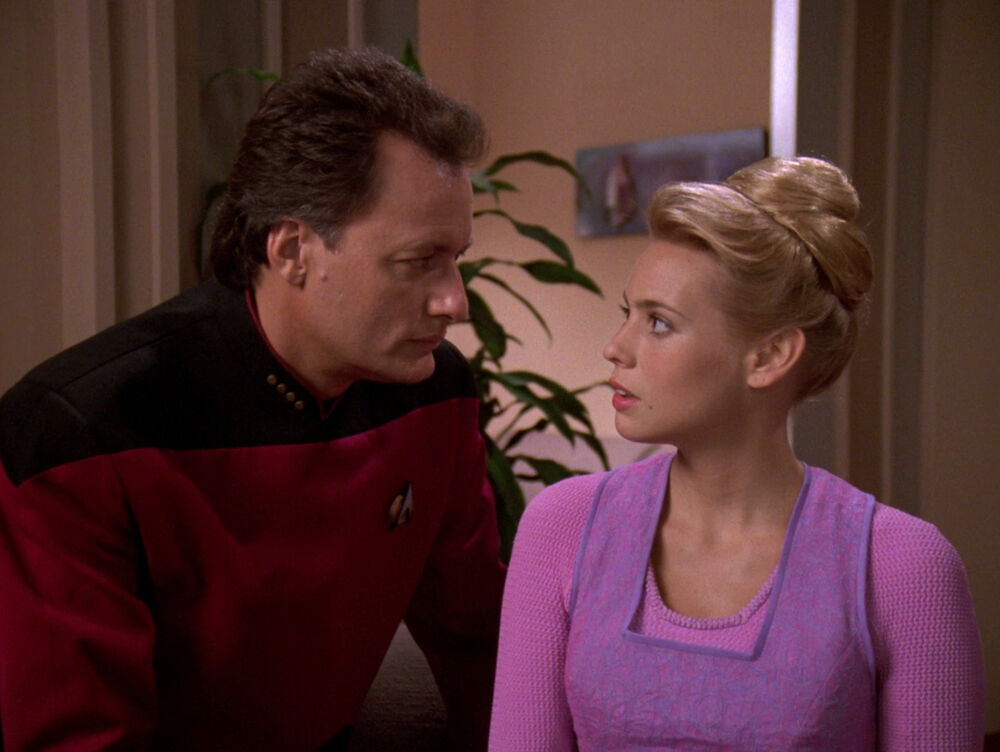
True Q (TNG: S6, E6)
True Q is an oddity, since the whole episode is rather down-to-Earth and low-stakes. Usually, Q episodes feel like big events, but True Q has an easygoing “episode of the week” quality that’s both endearing and a little forgettable. The Enterprise picks up a teenage girl named Amanda, who has strange powers. Q shows up to explain that Amanda was conceived by two Q living as humans, and that she needs to decide whether to accept her powers or live out a normal life. It’s fun to see Q as a parental figure (more on that later), but the episode’s stakes are pretty low overall.

Q2 (VOY: S7, E19)
One of the “just-for-fun” Q episodes, Q2 picks up where The Q and the Grey left off. Q’s offspring is now a teenager (or the Q Continuum equivalent of one, at least), and completely out of control. The elder Q reasons that the stern, patient Capt. Janeway can help the boy learn some responsibility. Seeing Janeway grapple with a recalcitrant young Q is as entertaining as it sounds, and de Lancie’s Q is as tricky and mercurial as ever. The episode even moves Voyager’s overall narrative forward a bit. In a fun touch, Keegan de Lancie — John’s son — plays the young Q.
Hide and Q (TNG: S1, E10)
TNG had a rough first season, but a few episodes were perfectly serviceable Star Trek stories. Hide and Q is one of those. In it, Q sees great potential in Cmdr. William Riker, and offers to make Riker a member of the Q Continuum. In the episode, Riker must grapple with the morality of using his fantastic new powers, and learns a few lessons about human fallibility along the way. If you guessed that the episode would be an allegory about the value of hard work, well, you’ve clearly seen at least one episode of Star Trek before. But Hide and Q fleshes out two important TNG characters, so that’s worth watching.
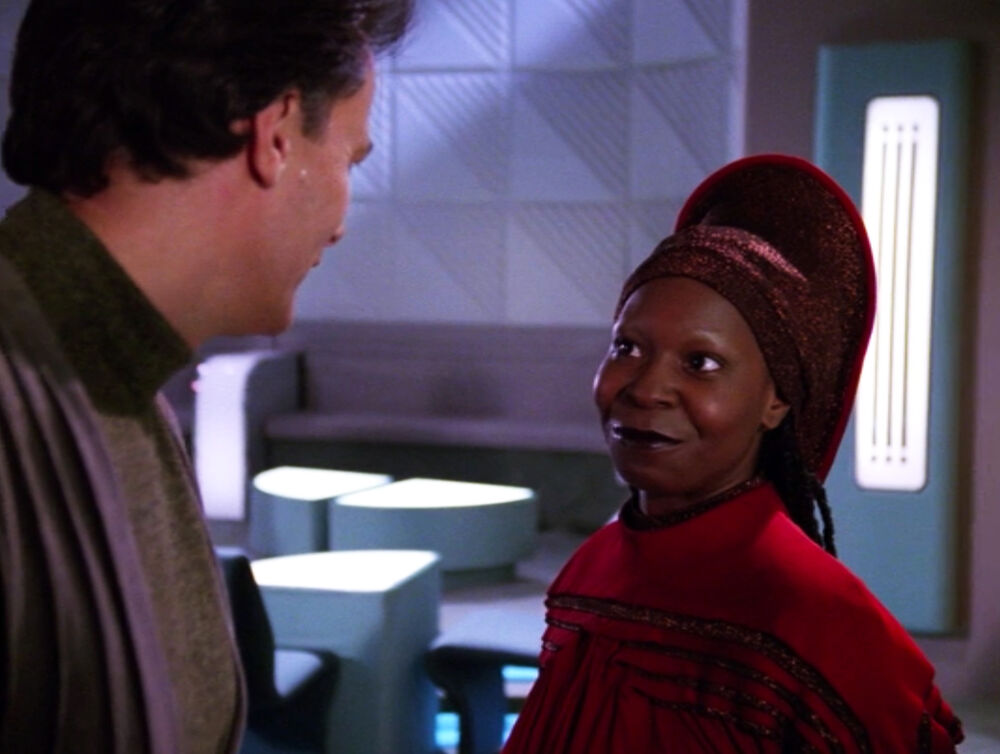
Deja Q (TNG: S3, E13)
Deja Q is a fun episode, as it finally makes Q answer for some of his bad behavior. After angering the rest of the Q Continuum, Q finds himself stripped of his omnipotent powers, and forced to live as a regular human aboard the Enterprise. There, he predictably clashes with just about everyone on board — especially Whoopi Goldberg as Guinan, who memorably jams a fork into his hand. Still, it’s rewarding to learn that Q can be inventive, helpful and even selfless when the situation calls for it. He gets his powers back in the end, but we wouldn’t have it any other way.
Qpid (TNG: S4, E20)
Qpid polled well among the whole Tom’s Guide staff. While it’s not the deepest or most thoughtful episode of TNG, it’s easily one of the most lovable. Q once again shows up to annoy Picard, but this time, there’s no deep, philosophical reason. He just wants to have some fun. As such, he transports Picard and the bridge crew to a fantastical Sherwood Forest, where they must live out a Robin Hood fantasy in order to save Picard’s love interest from the villainous Sheriff of Nottingham — played, of course, by Q. Come for the swordfights; stay to hear Lt. Worf proclaim that he is NOT a merry man.
Death Wish (VOY: S2, E18)
Death Wish asks the same question that many Star Trek fans have asked about the Q Continuum: If you have the power to go anywhere and do anything, at all times, what kind of meaning would your life have? For Quinn, an outcast from the Q Continuum, the answer is “not much.” Quinn has grown tired of his existence as a Q, and wishes to die. Q absolutely forbids it, but Capt. Janeway isn’t sure what to think. Death Wish is a dark and thoughtful episode about the merits of euthanasia, but it also takes a harsh look at the Q Continuum itself.
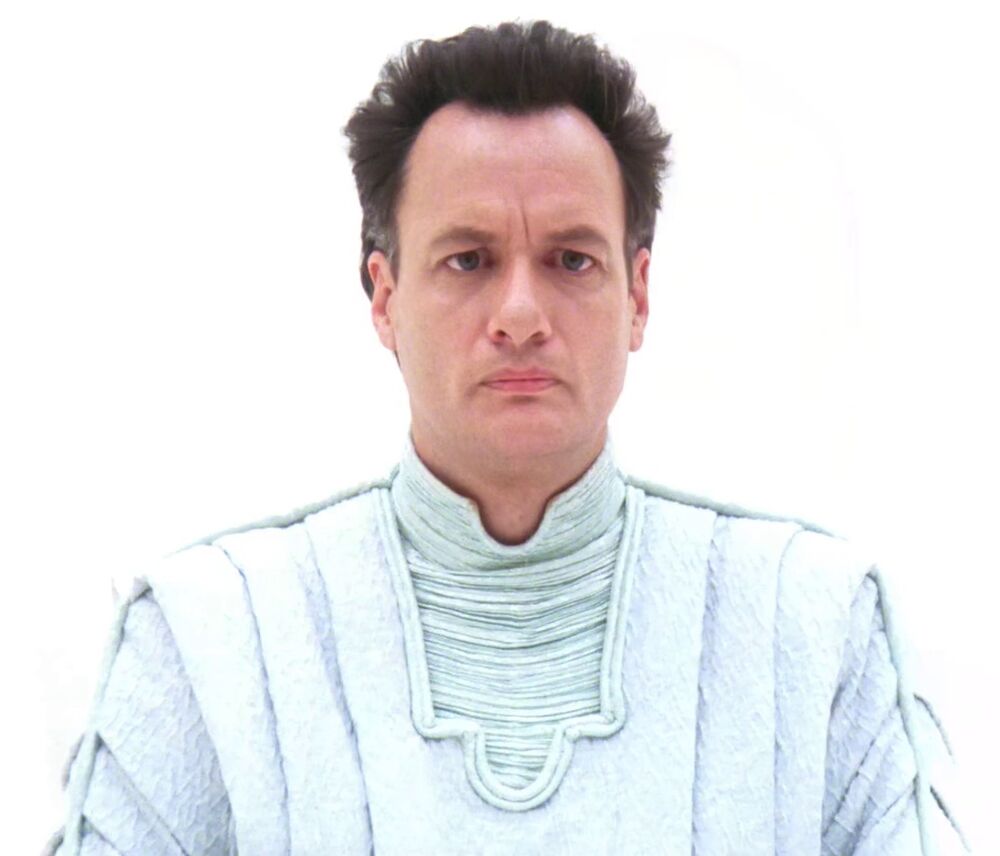
Tapestry (TNG: S6, E15)
Star Trek’s answer to Frank Capra’s It’s a Wonderful Life, Tapestry lets Capt. Picard reshape a pivotal moment from his past. After Picard dies due to a malfunction in his artificial heart, Q lets him relive the day that cost him his biological heart in the first place. Picard discovers that small choices can dictate the course of our whole lives — and Q exacts a high price for that lesson. While Q himself is decidedly not the central character in this episode, his running commentary and chemistry with Picard elevate the whole experience. It also shows us that perhaps Q is not as cynical as he seems.
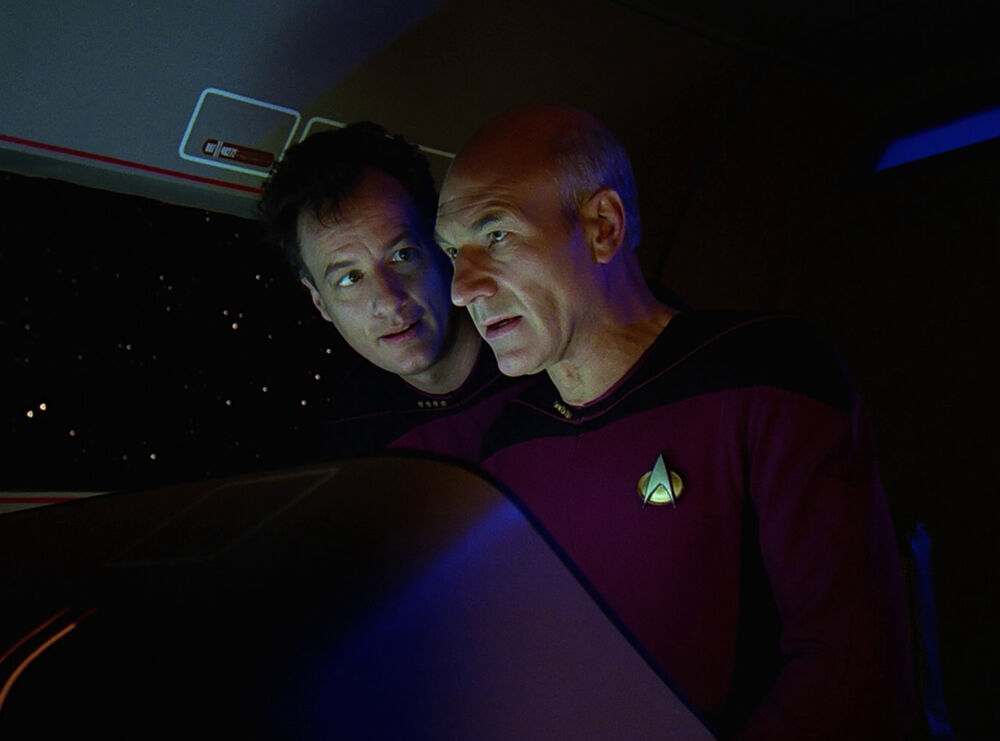
Q Who (TNG: S2, E16)
Up until Q Who, TNG viewers saw Q as a trickster, at best, and a villain, at worst. He showed up explicitly to make life miserable for the Enterprise crew, and was satisfied only when he’d made his point. Q Who was our first hint that, perhaps, the godlike being had some affinity for humanity after all. In this episode, he takes the Enterprise crew far beyond Federation space, where they encounter the ruthless Borg Collective for the first time. When the Enterprise finds itself outmatched, Q spirits the ship back home, but warns the crew that they can’t evade the Borg forever. It’s a chilling introduction for one of Star Trek’s pivotal species.
All Good Things… (TNG: S7, E25 & E26)
While Encounter at Farpoint may not be TNG’s most beloved episode, All Good Things… could not have happened without it. In the TNG series finale, Picard finds himself existing in three time periods simultaneously: the past, during the Farpoint mission; the present, investigating a spacetime anomaly; and the future, as an old man who left Starfleet behind long ago. Q shows up to explain that Picard’s temporally displaced actions have doomed humanity once and for all. Now, Q has given Picard one last chance to set things right, in his most mind-bending and ambitious trial yet. It’s a great sendoff for a beloved antagonist.
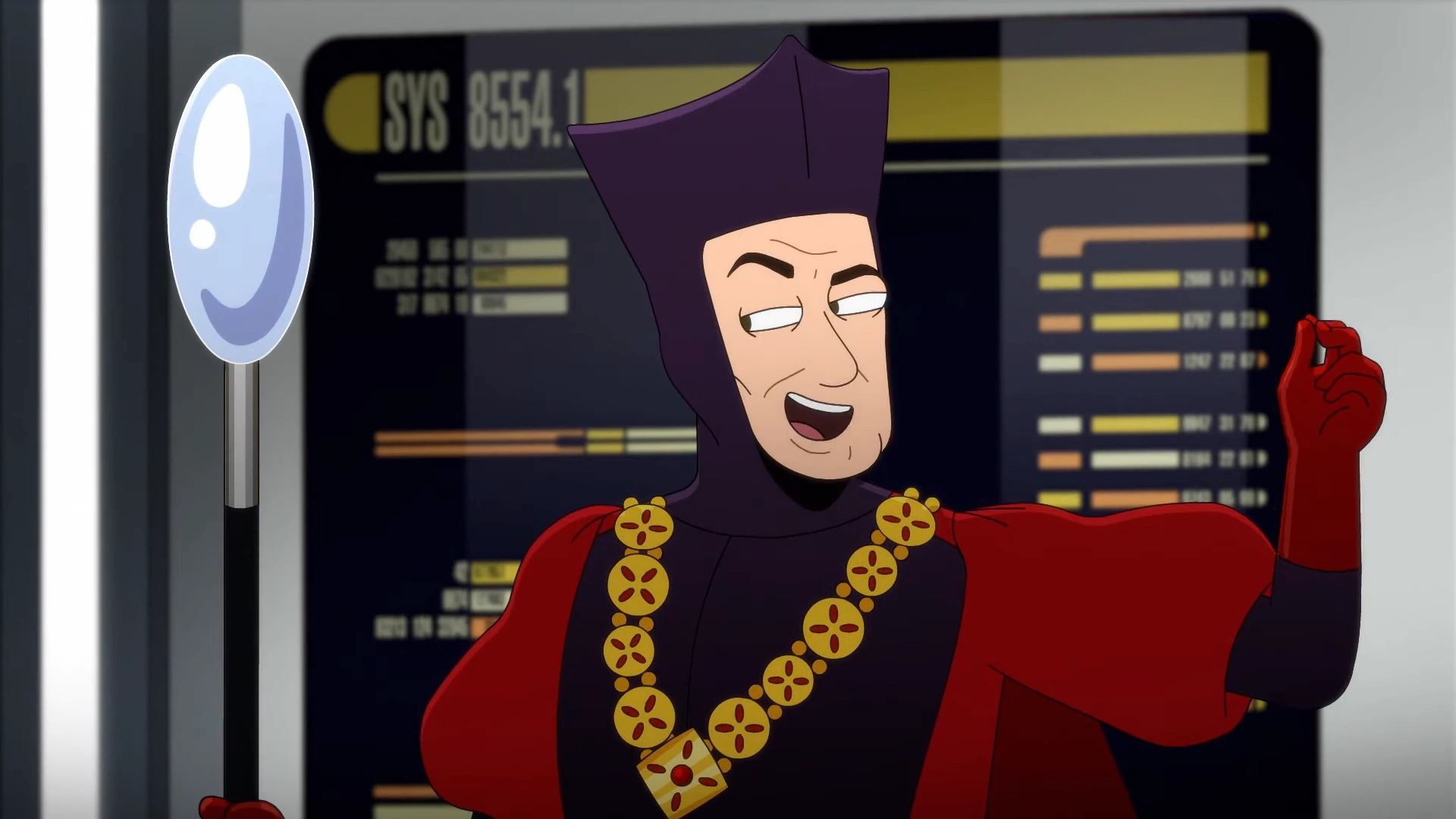
BONUS: Veritas (LOW: S1, E8)
We can’t really count Veritas as a Q episode — but we couldn’t leave it off the list, either. In this episode of the animated comedy Lower Decks, the crew of the Cerritos finds themselves on trial (sort of) for a host of seemingly unrelated Starfleet “crimes.” During Ens. Brad Boimler’s testimony, he points out that Q has apparently challenged the Cerritos crew on occasion. What’s more, Q himself shows up at the end of the episode — only to whine petulantly when Ens. Beckett Mariner refuses to play along with his games. She suggests that he go bother Picard instead, so perhaps the omnipotent being finally took her advice.
Marshall Honorof is a senior editor for Tom's Guide, overseeing the site's coverage of gaming hardware and software. He comes from a science writing background, having studied paleomammalogy, biological anthropology, and the history of science and technology. After hours, you can find him practicing taekwondo or doing deep dives on classic sci-fi.

